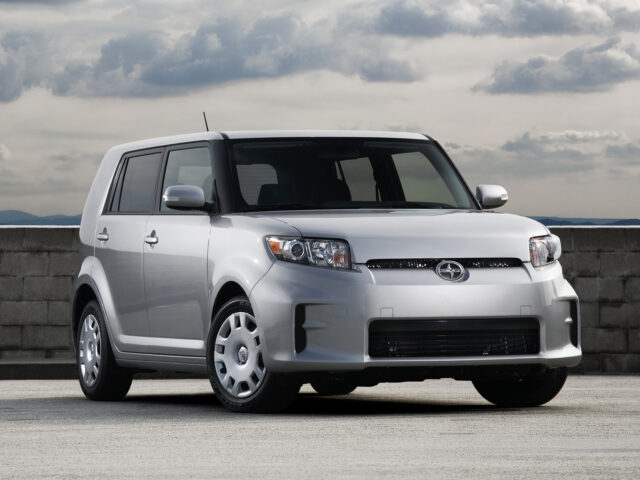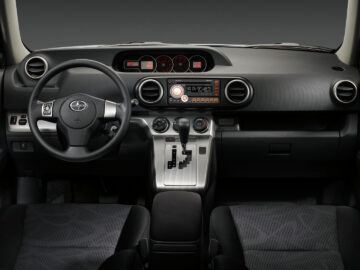Spotted: a Scion xB
Toyota is the brand for the masses, Lexus is the brand for the luxury segment. Did you know there was a third brand? That was Scion, a brand run only in North America. With Scion, Toyota wanted to appeal to a younger audience, with both sporty and affordable cars. The Toyotas iQ, Urban Cruiser and GT86, for example, also came as Scion, as did the Mazda 2. In fact, Toyota also had a partnership with that brand. There were also some truly proprietary Scion models, including this Scion xB.
The spotted specimen
The Scion xB we came across in the center of Hoorn is one from facelift model year 2011. The car has license plates from Ukraine, so the exact year of construction is impossible for us to determine. However, we can report that the car is registered in the Odessa region.
Assuming for a moment that all specimens are correctly registered (and not as a Toyota, for example), there are only nine Scions on Dutch license plates, according to the RDW’s registration register. Of these, only one is a Scion xB, a gray one from 2006, which has been in the Netherlands since 2009. The most common Scion in the Netherlands is the Scion tC, a compact coupe of which only four are still registered in the Netherlands.

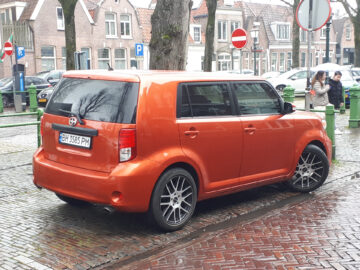
The first generation Scion xB
Back to the Scion xB. That came on the market in 2003 (for 2004 model year), along with the Scion xA. Both models marked the debut of the new sub-brand and stood out with their design. The Scion xA was a compact hatchback with a fairly tall, almost trapezoidal body. The xB was almost as large compact hatcback, with precisely very angular upright bodywork.
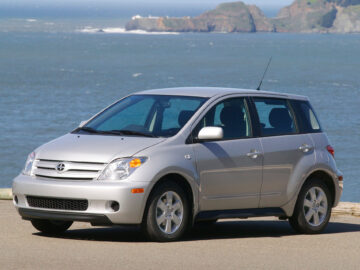
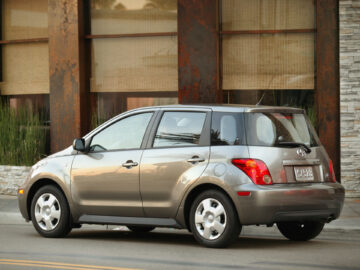
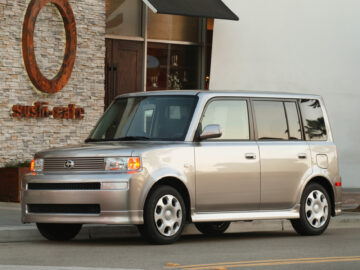

The Scion xB was actually a North American version of the Toyota bB, which had already been introduced for the Japanese market in 2000. The technical platform was shared with the aforementioned Scion xA (known in Japan as the Toyota Ist) and the Toyota Yaris that we are also familiar with in Europe. The Scion xB was only available with the 1.5-liter four-cylinder gasoline engine with 81 kW (110 hp), optionally mated to a five-speed manual transmission or a four-speed automatic. The drive always went to the front wheels. The Toyota came exclusively with automatic transmission, but also with a smaller engine and/or all-wheel drive.
Interior also differed between the Toyota bB and Scion xB. Of course, the steering wheel moved from right to left, but also the front seat of the Toyota was replaced by two conventional seats. That gave way to a shift lever, instead of the transmission lever on the steering column as in the Toyota version.

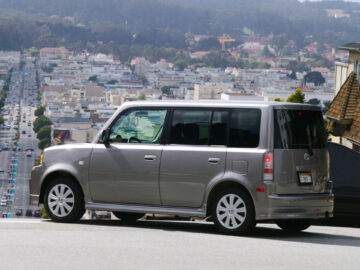
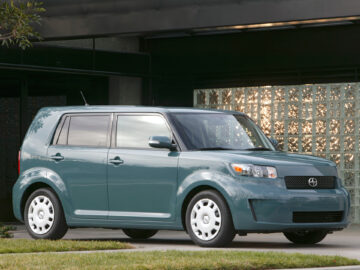

The second generation Scion xB
The second generation Scion xB followed in 2007 (for model year 2008). The model henceforth diverged from the Toyota bB. We know the second-generation Toyota bB in Europe in slightly modified form as the Daihatsu Materia. The second-generation Scion xB was henceforth an American version of the slightly larger, all-new and only Japan-delivered Corolla Rumion. So from now on, it shared its technical platform with the Corolla models and the European Auris.
Again, the Scion xB was available only with the largest engine: a 2.5-liter four-cylinder gasoline engine with 118 kW (160 hp). A five-speed manual transmission or a four-speed automatic, both combined with front-wheel drive, were again the only choices. The option list was very short anyway and included little more than body color and a better audio system.
A subtle facelift in 2011 also brought somewhat richer standard equipment. Some smaller changes followed in subsequent years, and the 2015 model year would eventually be the last for the Scion xB. The car was indirectly succeeded by the Scion iM, a North American version of what was with us the Toyota Auris. After Scion was disbanded as a brand, that car was renamed Toyota Corolla iM.
